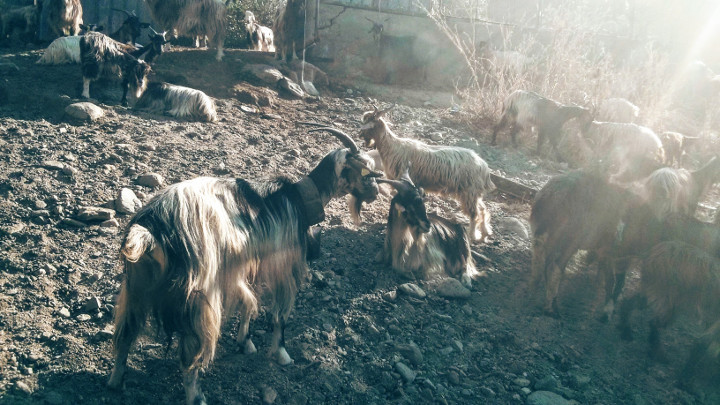Towards a theory of punctuated subsistence change
Well, I’m back after a pretty productive summer. I managed to do some different and interesting field-work in Calabria, southern Italy (which I’ll describe more fully in a subsequent post), as well as to finally bring a couple of articles to publication. Foremost among these is a paper that I’ve been working on for some time now, and that has just come out in the Proceedings of the National Academy of Sciences, with coauthors Ian Kuijt and Jacob Freeman.
The paper is, at its core, about bringing together two bodies of scholarly thought: the field of dynamical systems theory (DST), and research into the origins of plant and animal domestication during the “Neolithic Revolution.” I am an archaeologist by training, and I’ve focused most of my research on understanding the ways in which human societies changed with the advent of plant and animal domestication. In particular, I’ve been interested in how the relationship between humans and their environments changed when ancient peoples shifted from collecting a wide variety of wild resources to managing a handful of domesticated resources. This is a fundamental change with huge consequences that still are not very well understood, because, I think, we still don’t really know how this change came about, what predicated it, and what made it possible. This is despite quite literally decades of research and hundreds of very good research articles into this specific transition. I think the reason that our understanding of plant and animal domestication are still murky are that, 1) it, for the most part, happened a very long time ago (in many places around 10 to 12 thousand years ago), 2) the transition didn’t occur everywhere, nor all at once, and also appears to have been quite different in all the places where it did occur, and, 3) much of the evidence for the instigation of this transition was not, or could never have been, preserved in the archaeological record.
For me, DST provides a way around these obstacles. I can draw upon DST ideas to create sets of testable implications for the way the social and natural components of human subsistence systems interact to create structure and dynamics that are seemingly greater, or more complex, than the simple sum of the system’s parts. In particular, I can use these ideas to understand how these systems ought to grow and change over time. Much of my other research is also based in DST, but uses simulation-based methods, including agent-based models, to investigate how change can occur in “artificial” socio-natural systems programmed in a computer. One of the things I, and others, have learned from the simulation-based research approach is that, often, there is only a small number of variables that control the macro-level behavior of the system over time. With the simulation-based approach, we discover and analyze these highly important variables by creating simple systems of interlinked variables, isolate each variable, and varying them in systematic ways to observe how the course of the simulation changes (particularly in measures of things like population sizes or landscape degradation). This approach works well in silico, but we want to link these findings to empirical evidence so that we can more positively link the dynamics we observe in computer simulations to the observed patterns in archaeological or ethnographic data.
For this paper, my coauthors and I decided to approach the ethnographic record of human subsistence from the perspective that human subsistence systems are dynamical systems. We used ideas generated from observations of other dynamical systems (both in the real world and in computer simulations) to create hypotheses about the way data about human subsistence ought to pattern when subjected to specific statistical analyses (cluster analyses and dimensional reduction analyses). The main phenomena we were hoping to find were “attractors” and “repellors.” In DST, an attractor is a combination of variable states that is relatively stable over time, whereas an repellor is a combination of variable states that is not. In other words, DST tells us that there ought to be some combinations of subsistence behaviors and environmental characteristics that are generally stable, and some that aren’t. When we initially conducted the analysis, we weren’t sure if attactors or repellors would be observable in the rather sparse quantitative data on global human subsistence, but from quite early on in the analysis, we saw interesting clustering of societies highly suggestive of the attractor/repellor phenomena. What was even more interesting was that we began to see that the clustering was largely controlled by a small number of highly important variables, such as resource density, mobility, and population size. When we parsed the dataset along gradients in some of these variables, we noticed that the clustering changed in interesting ways. Basically, we discovered that changes in these variables brought some attractors closer together, created new ones, or eliminated others. That showed us that even though the general possibilities for human subsistence is largely governed by a small number of highly important variables, moving from one subsistence attractor to another is more possible under some socio-environmental conditions than others. It is this specific insight that may help to explain why the transition to food production happened in some times and places, but not in others, why it happened so differently in all these places and at different times and rates.
***
As always, I’m happy to field any questions or queries about this, or any other topic you read here (by email, or use the comments section below)! In the mean time, here’s an image of Calabrian goats to look at:


Leave a comment